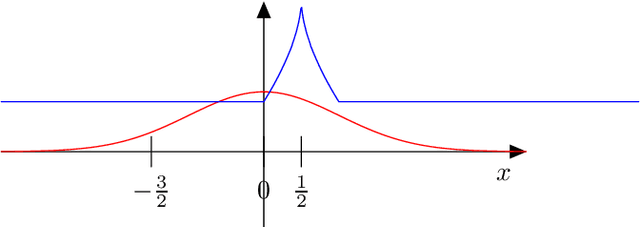Boris Ndjia Njike
Nonparametric active learning for cost-sensitive classification
Sep 30, 2023Abstract:Cost-sensitive learning is a common type of machine learning problem where different errors of prediction incur different costs. In this paper, we design a generic nonparametric active learning algorithm for cost-sensitive classification. Based on the construction of confidence bounds for the expected prediction cost functions of each label, our algorithm sequentially selects the most informative vector points. Then it interacts with them by only querying the costs of prediction that could be the smallest. We prove that our algorithm attains optimal rate of convergence in terms of the number of interactions with the feature vector space. Furthermore, in terms of a general version of Tsybakov's noise assumption, the gain over the corresponding passive learning is explicitly characterized by the probability-mass of the boundary decision. Additionally, we prove the near-optimality of obtained upper bounds by providing matching (up to logarithmic factor) lower bounds.
Nonparametric adaptive active learning under local smoothness condition
Feb 22, 2021
Abstract:Active learning is typically used to label data, when the labeling process is expensive. Several active learning algorithms have been theoretically proved to perform better than their passive counterpart. However, these algorithms rely on some assumptions, which themselves contain some specific parameters. This paper adresses the problem of adaptive active learning in a nonparametric setting with minimal assumptions. We present a novel algorithm that is valid under more general assumptions than the previously known algorithms, and that can moreover adapt to the parameters used in these assumptions. This allows us to work with a larger class of distributions, thereby avoiding to exclude important densities like gaussians. Our algorithm achieves a minimax rate of convergence, and therefore performs almost as well as the best known non-adaptive algorithms.
K-NN active learning under local smoothness assumption
Jan 17, 2020Abstract:There is a large body of work on convergence rates either in passive or active learning. Here we first outline some of the main results that have been obtained, more specifically in a nonparametric setting under assumptions about the smoothness of the regression function (or the boundary between classes) and the margin noise. We discuss the relative merits of these underlying assumptions by putting active learning in perspective with recent work on passive learning. We design an active learning algorithm with a rate of convergence better than in passive learning, using a particular smoothness assumption customized for k-nearest neighbors. Unlike previous active learning algorithms, we use a smoothness assumption that provides a dependence on the marginal distribution of the instance space. Additionally, our algorithm avoids the strong density assumption that supposes the existence of the density function of the marginal distribution of the instance space and is therefore more generally applicable.
K-nn active learning under local smoothness condition
Apr 08, 2019Abstract:There is a large body of work on convergence rates either in passive or active learning. Here we outline some of the results that have been obtained, more specifically in a nonparametric setting under assumptions about the smoothness and the margin noise. We also discuss the relative merits of these underlying assumptions by putting active learning in perspective with recent work on passive learning. We provide a novel active learning algorithm with a rate of convergence better than in passive learning, using a particular smoothness assumption customized for $k$-nearest neighbors. This smoothness assumption provides a dependence on the marginal distribution of the instance space unlike other recent algorithms. Our algorithm thus avoids the strong density assumption that supposes the existence of the density function of the marginal distribution of the instance space and is therefore more generally applicable.
 Add to Chrome
Add to Chrome Add to Firefox
Add to Firefox Add to Edge
Add to Edge